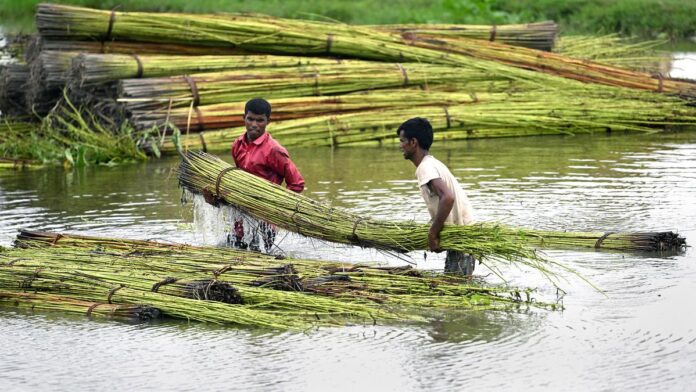Jute, known as the golden fibre, is the second most important cash crop in India after cotton in terms of cultivation and usage. India is the largest producer of jute in the world. West Bengal, Assam, and Bihar are the major jute-growing States in the country, and raw jute farming and trade make up the livelihood of about 14 million people.
Jute is mainly cultivated by marginal and small farmers of Assam. The State is the second-largest producer of jute in India. The main jute-producing districts are Nagaon, Goalpara, Barpeta, and Darrang. Jute is a labour-intensive crop and provides huge employment opportunities and benefits to local farmers. The agro-based and export-oriented industry has played an important role in the economy of Assam.
The bast fibre crop can be harvested at any stage after a certain period of vegetative growth, usually between 100 and 150 days.
Harvesting of jute crop at the pre-bud or bud stage gives the best quality fibre, however, the yields are low. Older crop yields more quantity but the fibre becomes coarse and the stem does not ret properly. Hence, as a compromise between quality and quantity, the early pod formation stage has been found best for harvesting.
Harvesting is done by cutting the plants at or close to the ground level with sharp sickles. In flooded lands, the plants are uprooted. The harvested plants are left in the field for two or three days for the leaves to shed. Next, the plants are tied into bundles and the branching tops are left to rot in the field.
Retting is one of the important operations governing the quality of fibre. The bundles are kept in water and later placed side by side, usually in layers and tied together. They are covered with water hyacinth or any other weed that does not release tannin and iron. The float is then weighed down with seasoned logs or with concrete blocks or are kept submerged with bamboo-crating.
Retting is best done in slow-moving clean water. The optimum temperature is around 34 degrees Celsius.
Once the fibre comes out easily from the wood, retting is considered complete.
Many countries are now trying to reduce the use of plastic commodities, especially plastic bags. Jute bags are biodegradable and environment-friendly alternatives to plastic bags. Here lies the economic prospects of jute.
Along with the traditional usage, jute can contribute in the production of value-added products such as paper, pulp, composites, textiles and other materials.
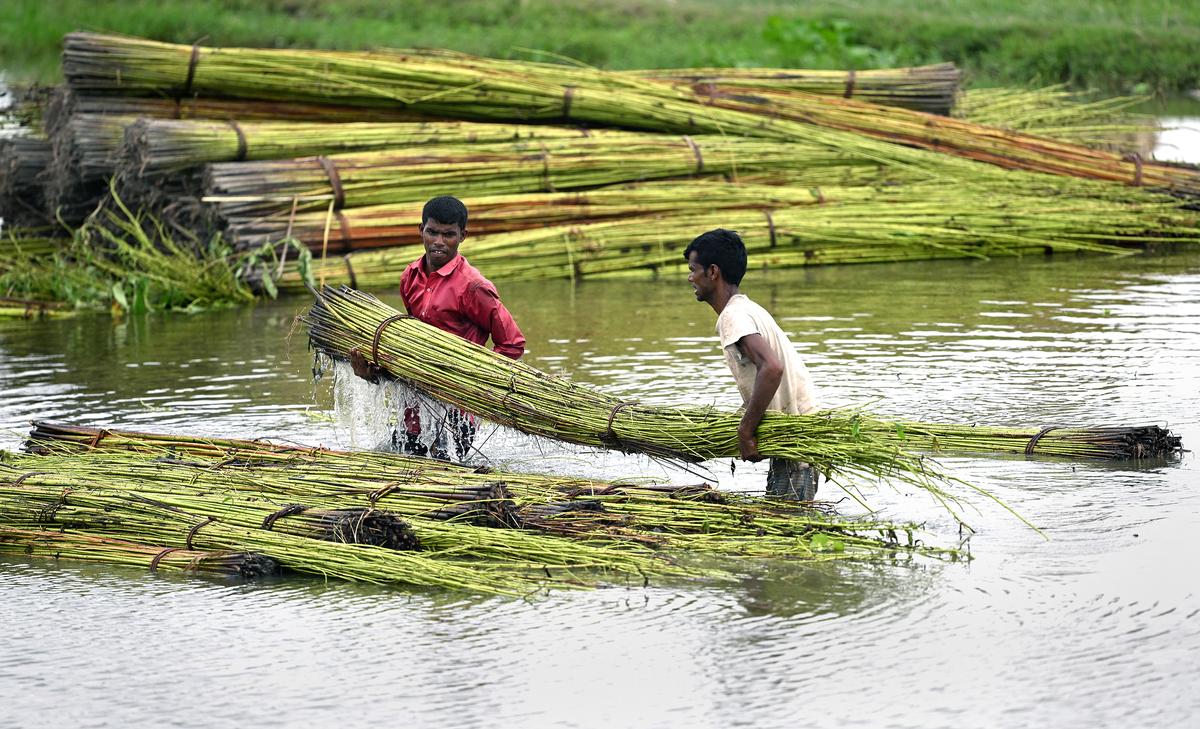
Photo:
Ritu Raj Konwar
First step: The harvested jute is ready for fibre extraction at Goroimari village in Kamrup district of Assam. The State is the second largest producer of jute in India.
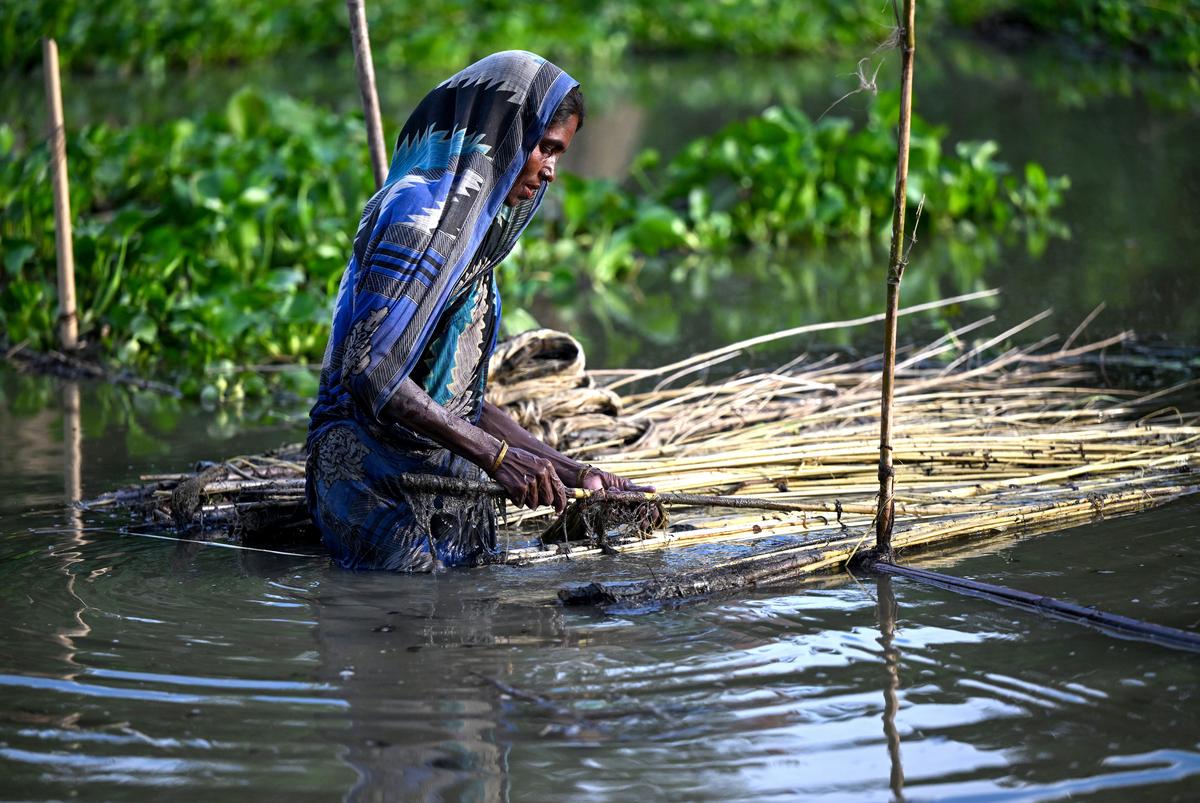
Photo:
Ritu Raj Konwar
Labour intensive: A women extracts fibre by hand from retted jute stems.
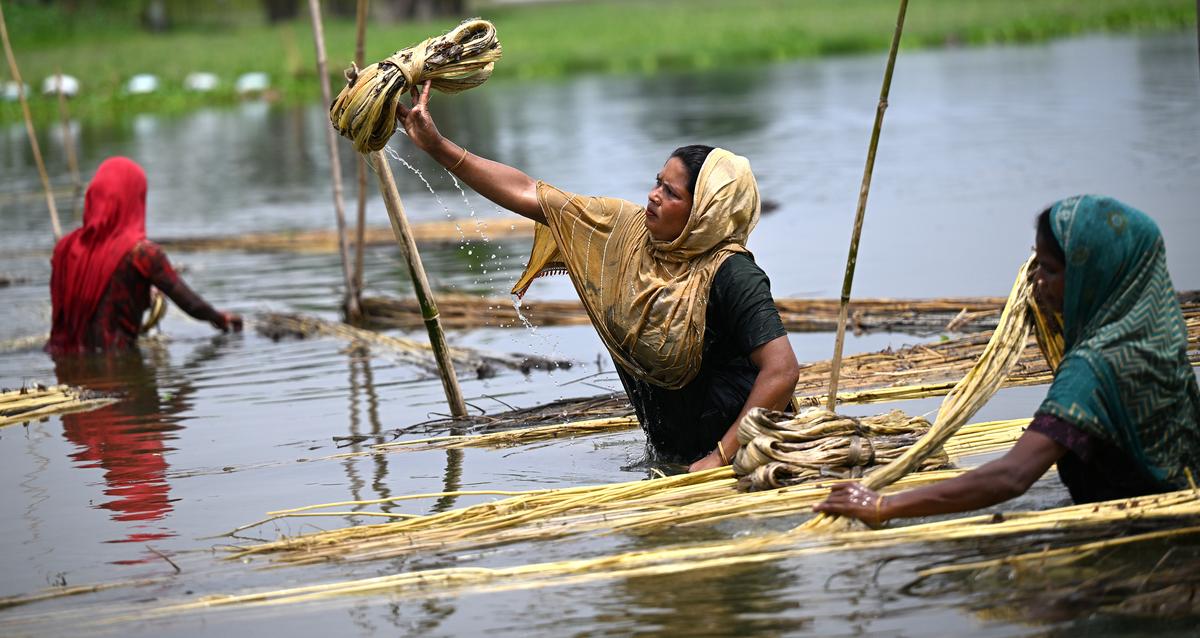
Photo:
Ritu Raj Konwar
Deft work: The fibre extracted from jute stems is tied into bundles
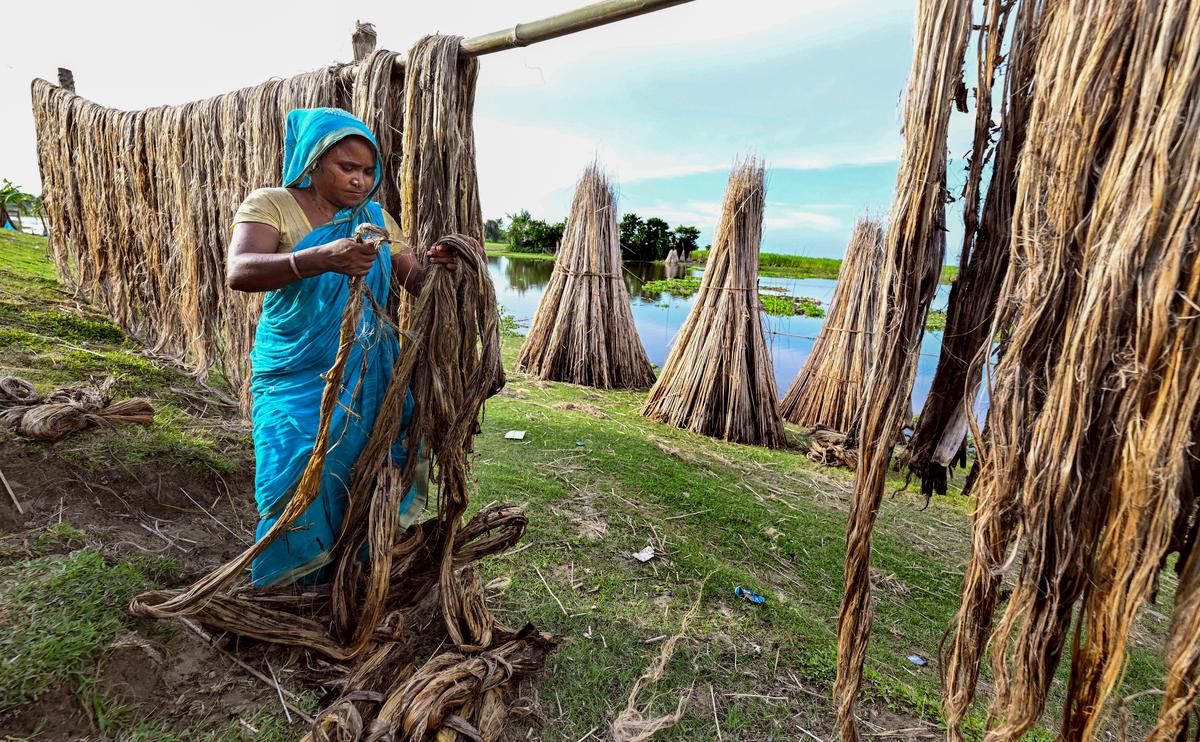
Photo:
Ritu Raj Konwar
Rugged locks: A woman leaves jute fibres out to dry
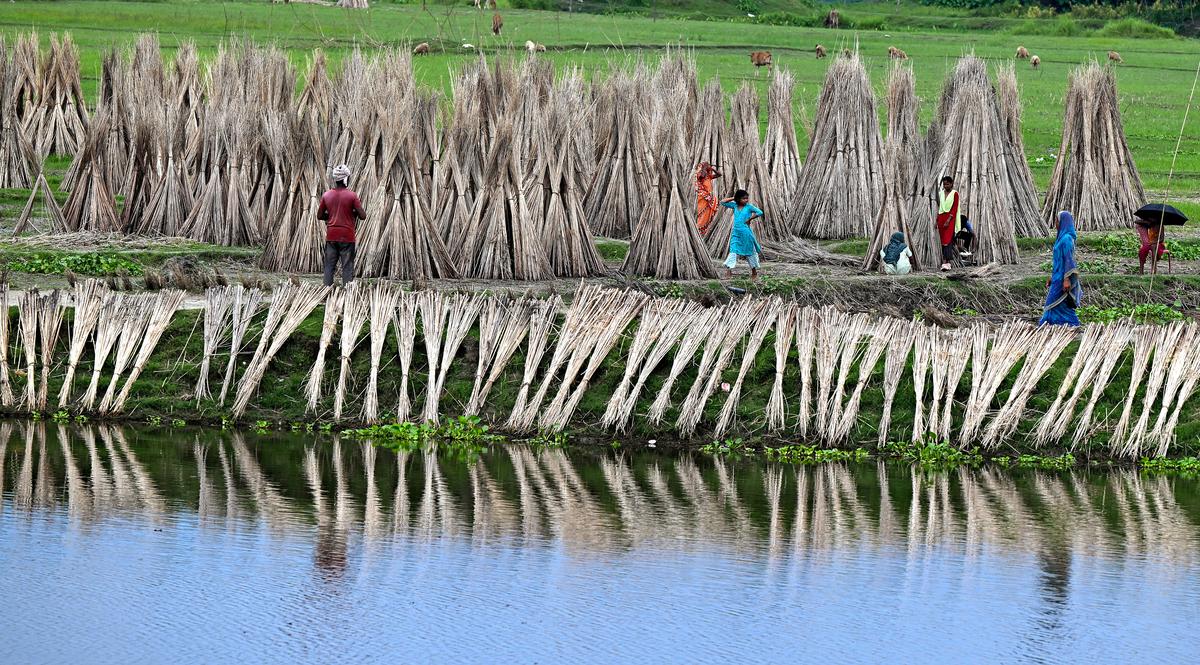
Photo:
Ritu Raj Konwar
Slow process: Bundles of jute stem left to dry under the sun.
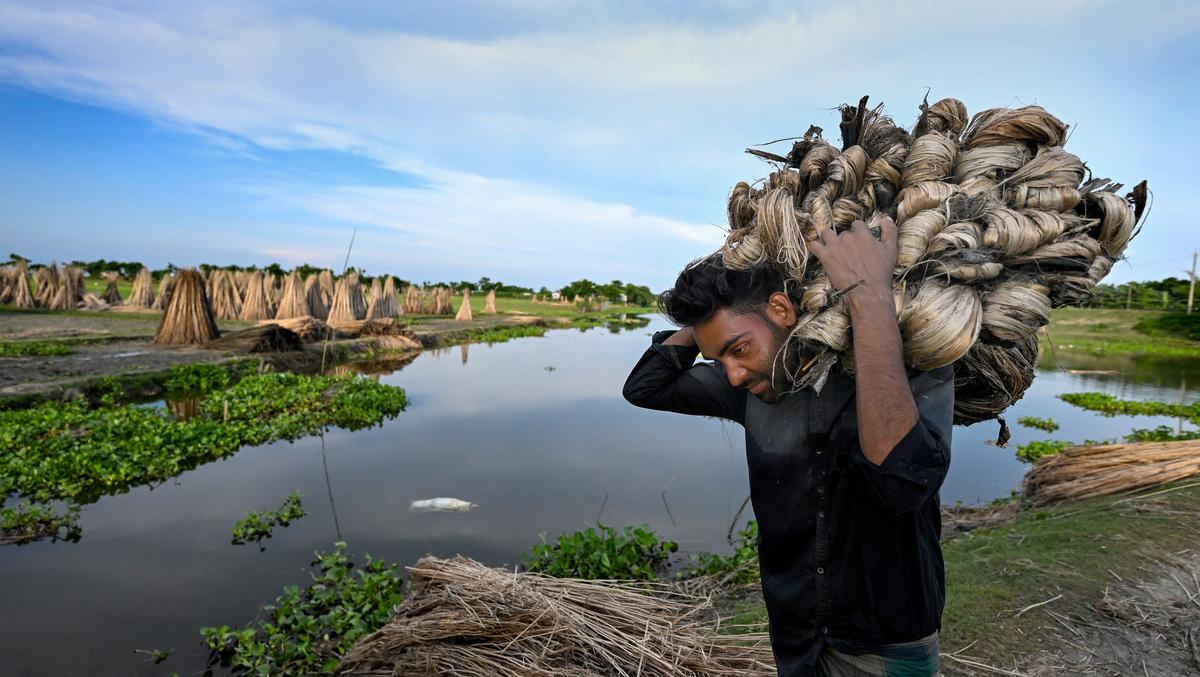
Photo:
Ritu Raj Konwar
Good yield: A farmer carries the fibre extracted from the stem
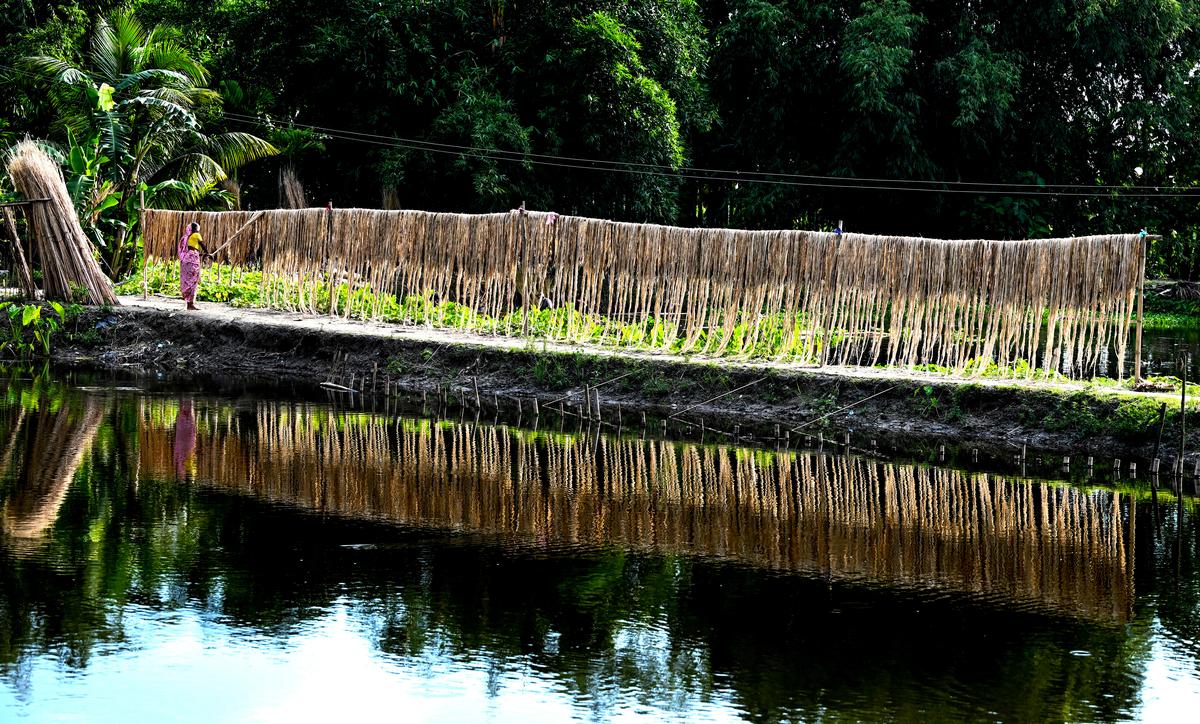
Photo:
Ritu Raj Konwar
All in a row: A woman dries jute fibre near her house at Goroimari village.
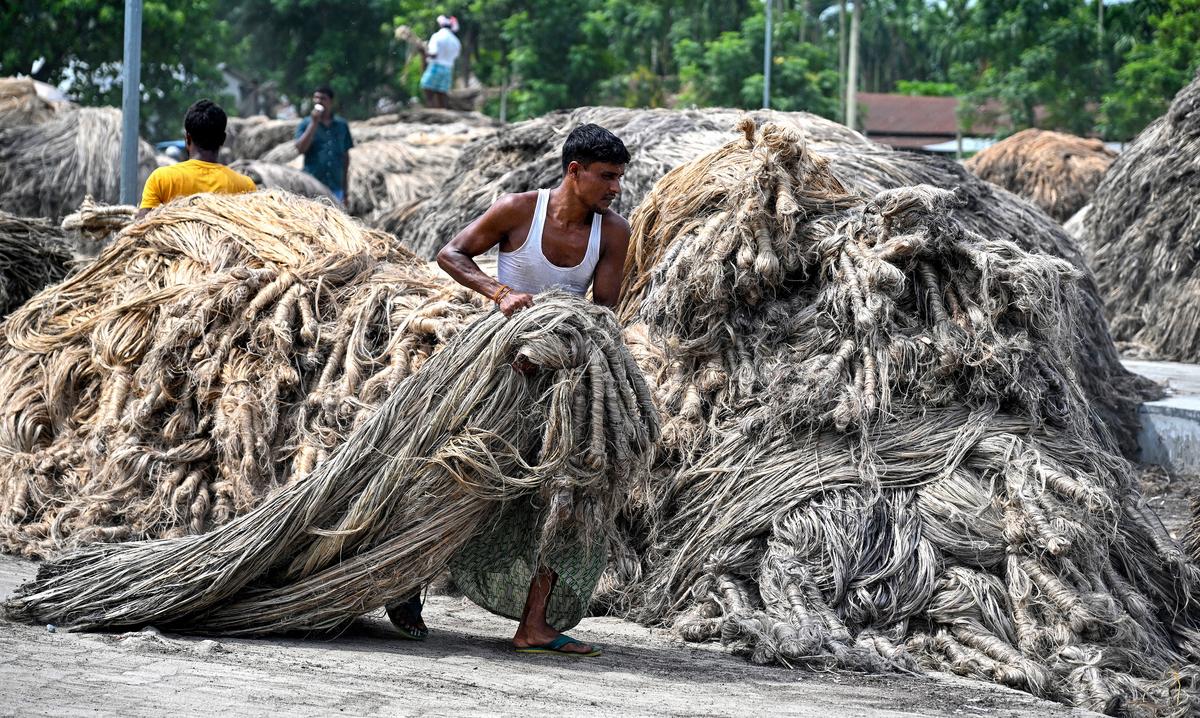
Photo:
Ritu Raj Konwar
In demand:
Vendors gather jute
fibre at a weekly
market.
Published – September 15, 2024 01:34 pm IST
#Frames #Jute #golden #fibre
